| Umělec magazine 2007/2 >> IT IS FUN TO BE BOHEMIAN - A video-documentary project about the Pilsen quarter in Chicago | List of all editions. | ||||||||||||
|
|||||||||||||
IT IS FUN TO BE BOHEMIAN - A video-documentary project about the Pilsen quarter in ChicagoUmělec magazine 2007/201.02.2007 Michal Kindernay a Lenka Dolanová | en cs de es |
|||||||||||||
|
“So much coal everywhere!” said Navrátil, looking at the huge piles by the railway and down by the port. “I would say so!” nodded Pícha when the newcomer commented on one of the great things about Chicago. “That’s the factories, with so many engineers! And that is the sugar refinery.” He pointed at the huge, thirteen-floor building. “The tallest factory in the world. Many Czechs work there. And here—” he gestured, because they were heading towards the crossroads of Taylor, De Koven and Bunker, “begins the oldest Czech settlement in Chicago!” “Ah, Pilsen!” cried Navrátil, who had already heard all about such a district. “No, no!” barked Pícha. “Who told you that Pilsen is the oldest? It was only built after the big fire. When I say that the Czechs were here first – that was here.” (Pavel Albieri, Nevěsta za padesát dolarů: českoamerický obrázek z Chicaga, 1897 (A Bride For 50 Dollars: A Czech-American Picture from Chicago).
The Pilsen neighbourhood lies about two miles south-east of the Chicago Downtown area. It has good metro and bus connections, and by bicycle the journey takes about twenty minutes. Its relative isolation (to the west is a highway, on the south Čermák avenue, which adjoins an industrial region; to the North lies the railway and to the East, Pilsen disappears into a peripheral residential area) and ethnic specificity gives it a village atmosphere, and the skyscrapers look almost neat from there. The district is named after the Czech town Plzeň, and I lived there, in a dilapidated flat, part of a house containing a virtual international community, from September 2005 till July 2006. My first feelings – that this was a place that had been waiting for me– were coupled with a strong sensation of deja vu. It was Michal’s idea to make a film – he visited me for the first time that December. The intensity of our meetings there, in pre-Christmas Pilsen, fuelled in us a strong passion to make a documentary. In the streets of Pilsen we looked for Czech motifs, and in the houses around us people with Slavic ancestors sang songs. All the time we were falling in love with its Mexican and bohemian form. Michal returned in June, and, over the next three weeks, inspired by our new obsession, we shot more and more footage. To date, we have about forty hours of interviews, and various journeys taken through Pilsen on a bike or by car, during which time we tried to find a way to squeeze the haunting atmosphere into our camera’s eye. Our spontaneous documentary reflects our patriotic game, looking for a disappeared Czech community lost somewhere in a Mexican district. At the same time, it is open to hearing the statements of all the inhabitants of Pilsen, people whose experiences seem so contradictory that one could almost consider them wildly inconsistent. The conflicts inherent throughout various historical layers, visual and aural motifs, and different ways of thinking help shape the uniquely attractive nature of this neighbourhood, whose picture appears in the minds of its disparate inhabitants in various and rearranged forms. CZECH MARY AND MEXICAN EAGLES The novel Nevěsta za padesát dolarů, written by Pavel Albieri at the end of the 19th century, describes the story of a country girl who comes to Pilsen to get married. She insists the place is a Czech district, and her travels through the neighbourhood serve as an excuse for lengthy descriptions of the local surroundings. The heroine, named Mary, originally arrives to visit the butcher František Vávrovský, and ends up, after many interludes, with a much better catch-—an assistant to the editor Antonín Navrátil. The book was to motivate other Czech girls to travel to Chicago looking for marriage. At the beginning of this past century the number of Czechs emigrating to America was very high, and reaching Pilsen was one of their main goals. This region was founded by the Czechs after the Great Fire of 1871, when it was still largely a swampy meadow, a place where the first settlers came duck hunting. Matěj Škundera founded the pub “At the City of Pilsen,” and this gave a name to the whole district, which, until 1910, was the biggest Czech community in the U.S. In the 1920s there were more than twenty various ethnic groups: as well as Czechs and Slovaks, there were Poles, Lithuanians, Croatians and Slovenians. After the founding of Czechoslovakia in 1918, the number of emigrants tailed off, and, ever since the 50s, when the district was invaded by Mexicans, the Czechs started moving out, mainly towards the Southwest, around California Avenue and into the Cicero and Berwyn quarters. Today, Pilsen is one of the most important centres for Chicago’s Mexican community, and the Czechs can be counted on one hand. The few Czech inscriptions on the buildings—such as Plzeňský sokol, Chrám Sv. Víta or the initials C.S.A.S. (Česko-Slovanská Americká Síň) are watched over by Mexican eagles, and Pilsen’s sewer covers are adorned with Aztec calendars. It was back then that the Czech language started to disappear from the streets of Pilsen, and today most people around here speak no language other than Spanish. This ethnic change was not wholly peaceful— at that time Pilsen was a well known stronghold of Mexican gangs, but the inhabitants of today remember that time as the golden era of Pilsen. The Czechs had created themselves an identity by building houses whose architecture and purpose mainly came out of the traditions of their homeland. The Mexicans used far more painterly means, so that the Mexican character of the district is evident in the many murals, each of a revolutionary theme, found in the vicinity. On the streets you can constantly hear mariachi music, and in summer the same avenues are full of children and ice-cream carts. Everywhere it seems you can find vendors selling the delicacies of tamales and tacos, right down to the corn drink champurados. The great Pilsen galleries—Polvo, founded and led by three Mexican artists and activists, or the new media Busker, which settled in the former flower shop recently—show that with moving into this closely watched region, there is presumed a community orientation and a certain form of activism, as if newcomers must earn their stay in Pilsen. There are many activist groups, each linked to a rich tradition of working and anarchist activities, that are currently focused on the problems associated with gentrification—the ongoing process of renovating poor city districts, that is closely bound to the increasing prices of land and buildings, pushing the rents up, too. The mottos of the anti-gentrification protesters, slogans like “Gringos out of Pilsen,” or “Pilsen Not for Sale,” lurk on T-shirts, banners and murals. In Pilsen we found two compatriots: Helen Seifert, whose parents had come from Nebílovy, via Plzeň; and Bess Borysowicz, whose mother came from Hradec Králové. Helen once, while walking along 19th Ave., copied my phone number on the door for the postman, and that Christmas Day called to wish me “Merry Christmas and a Happy New Year!” Later, we managed to contact Helen’s relatives from Nebílovy, and they exchanged a few letters with her, but now that correspondence is over, due to a lack of interest on the Czech side. Helen’s brother moved out of Pilsen when his son started using a Spanish accent, and they now see very little of one another. Bess told us – in her peculiar Czech scrambled with English expressions, how she visited the Czech school in Pilsen, where they learned “how to read and write, the history of Czechoslovakia, and so on.” Bess was born in Pilsen, like Helen, and she married the son of Polish immigrants: “When I got married we went to the Little Village. That’s a bit further from here, and we were there in summer. My uncle died—that was my mother’s brother—and he had a house at Morgan, and he had made a will, so I got that house, half and half with my brother. My brother gave me his half, so my husband said we won’t need to pay any rent if we go live in the house—and so I have been here since 1972.” Both feel a bit lonely in Pilsen and their comments on the change of a Czech district into a Mexican one are not entirely free of bitterness. In the minority now, they still see Pilsen as a Czech neighbourhood, now occupied by “those Mexicans.” JUMPING BEAN The heart of Pilsen is the Jumping Bean. Located on Main St. and 18th Ave, the coffee house was founded in 1994 as a meeting place for the local art community. José Uribe, an artist, editor and activist, left Mexico in that revolutionary year, 1968, and has lived in Pilsen since 1970. “I will tell you the history of Pilsen using the murals,” he told me at the beginning of our walk through the district. Marcos Raya, Hector Duarte and Salvador Vega are the authors of various wall paintings full of Mexican symbols and protest slogans. José explained to me the symbolism of a mural opposite the coffee house, painted by Jesus Gonzales “from the head of Zapata to the head of Juarez,” with inscriptions like “Stop gentrification in Pilsen” or “Alto a la baser moral.” He also told me that the building had been a barber’s shop before, and it used to have lots of pictures of Pancho Villa. All day long, the Jumping Bean is packed with people- crowds chatting around the colorful tables, peering into laptops, or, just lonely readers; everyone drinks delightful, bottomless coffee. Allan Berry, a young painter and biker, spent even more time than me in the coffee house, and just like me he was fascinated by Pilsen. He lives there because he believes it is the best district in Chicago. When I ask him why, he says that it is just one of those things that one cannot define. He started speaking about street sellers and the coffee house. I recorded his interview on the roof of the former cement factory, an enormous building not far from Pilsen where Allen took me the last week of my stay. “I came to Chicago with a mobile phone and a sleeping bag and I lived up there in Andersonville for a while. I was there for a year and I didn’t like it at all. And I’ve always heard about how there were artists suffocating down there on the Southside, in this neighborhood Pilsen, so I took my bicycle down there just to explore, and I was scared to death, man. Like, what was this? This wasn’t at all what I was expecting to find in Chicago. I was a little sheltered at that point. I moved here five years ago. I was the only white guy you would see all day. There were a few other artists. We were gringos.” The coffee house building has Czech roots: originally it was built as a photographic studio in 1908 by the father of Paul Němeček, who now works in the Czechoslovakian museum of Chicago. Paul has a model of the building in the museum, which he maintains and proudly shows to visitors. The Mexican photographer Pete Rodriguez lived, for more than 20 years, above the coffee house in Němeček’s former studio. He had to move out recently because the owner wanted to rent the upper floor for more money. I visited him the last day he spent in that wonderful studio, with its skylight, and whose walls were full of pictures and photos. Pete drank beer with friends, discussed American politics, took down the pictures from the walls, and swore. MARIACHI AND BRASS MUSIC Kenneth Corrigan, a bookseller and amateur historian of the district, lives in the building of a former Slavic gymnastic club, the National Tel Club. Kenneth is of Slovenian origin and he complains that finding any kind of literature about Pilsen’s Slovene past is extremely difficult, and that people only talk about the Czech past. He showed us a documentary that was released when Pilsen was nominated as a historical district, and he complained that it contains no information about Czech Jews, only a brief reference to the Croatians, and nothing at all about Slovenians. It was to Kenneth that I took everyone who was interested in the history of the Czech settlement. From him I now know that the original inhabitants of Pilsen were Irishmen who came in the mid 19th century, which was about twenty years before the Czech settlers arrived. During the next visit, he proudly showed us mugs inscribed with the names of famous pubs “Zlatá studně” and “U Fleků,” and we discussed the similarity of mariachi and Moravian brass music. When I mentioned someone has once told me that mariachi music originally comes from Moravia, Kenneth craftily added, “Yes, it is from Middle Europe. Completely Middle-European.” We discussed the ways buildings were being renovated, and Kenneth criticized the reconstruction of the former Czech Thalia Hall, for making it “too beautiful,” and not respecting its original historical form. Kenneth even reveals, when a friend comes around, that he actually has a destroyed coat racks, originally brought in from Vienna. Our last days were spent spraying inscriptions like “It’s Fun to Be Bohemian” and “Los Checos Back to Pilsen” on the streets in front of the formerly-Slavic buildings: which was supposed to be an attempt to reintroduce the Czech motifs. My landlord, Bob, told me just before I left that he is afraid Pilsen will be completely different when I return. He fears that it will change because many yuppies and “muppies” (a term for Mexican yuppies made up by Pete Rodriguez) will move in, and start buying houses- pushing the rent up even higher, forcing the present inhabitants to move out. Pilsen will become another fashionable district just like Wicker Park, another Chicago district that used to be a poor and dilapidated quarter until it gained a hipster reputation. Today it is full of fashionable clubs, coffee houses and shops. Perhaps that’s nothing too terrible, no great crime. But Pilsen is Pilsen, and I don’t just want to meet fashion and design-oriented people equipped with sleek scrawny dogs. Wicker Park is a district of graphic designers. Pilsen is a district of “immigrants, alcoholics, waisters and artists” (to quote José).You will meet more people here wearing a coat from a dustbin than are styled in close-fitting shirts. There are not many dogs, but lots of cats, pigeons and squirrels. Recently Allan wrote to me (Allan also helped us with our street graffiti): “Your graffiti is still here, although it’s getting a little harder to see, a little more faded than it was.” Maybe all the Czech and Mexican ghosts will finally start to find a compatible language- one united in lamenting. FOREIGNERS An image of an ideal living-space is often much more easily projected into places that we don’t know very well. But in the immigrant district of Pilsen all people feel like foreigners, yet at the same time consider it their home. According to Julia Kristeva, the artistically inspired foreigners derive their creative energy from this estrangement, transforming the past into a game, and seeing themselves as mere passers-by: “A strange way of being happy, or feeling imponderable, ethereal, so light in weight that it would take very little to make us fly away…” In our documentary we want to catch this elusive presence, together with the footprints of all the various past inhabitants, at the precise moment the district undergoes a radical change, one which might help to discover all of the community’s forgotten layers. Recently we held a small “Bohemian” festival in Pilsen, where we evoked “bohemian” ghosts exactly one hundred years after that peak year of Czech immigration, 1907. We plan to project our documentary, and other films about Chicago regions, and hopefully provoke a discussion about these districts, Pilsen in particular, and all the changes it has witnessed. We will invite historians, artists and activists from local organizations and from the Czech Republic. We can bring along documentaries about how Czech districts have transformed. We will connect the activities in Pilsen and Plzeň via the internet. A parallel action- two Pilsens on two continents. “Pero los Checos son muertos!” barked René from the Mexican centre Casa Aztlán, when I tried to explain to him why I was interested in the history of Pilsen. I attempted to persuade him that it is a pity no one speaks about Czech history anymore. “But the Czechs are dead! And those who remained, adapted themselves, started to eat tacos and tamales.” Helen Seifert or Bess Borysowicz wouldn’t agree. For all the neighbours from 19th street and its close surroundings, to José Uribe and the coffee house Jumping Bean.(1) (Footnotes) (1) The term “jumping bean” describes the “jumping” seeds of a Mexican shrub, Sebastiana pavoniana, famous for jerking in all directions. These are capsules in which a moth larva is contained (laid when the capsule isn’t quite ripe); the larvae eats the seed in one part of the capsule, and then jumps from side to side thus causing the jumping movements. By jumping, the capsule can get to a safe place where the larva can relax, pupate, and undergo the metamorphosis. Some can jump for a few months, and can travel for miles until they find a suitably cold, dark place. Later, the larva bores a hole in the capsule, and emerges as a bluish moth. A mobile home, which travels jumping along with its inhabitant, remains after the transformation.
01.02.2007
Recommended articles
|
|||||||||||||
|
04.02.2020 10:17
Letošní 50. ročník Art Basel přilákal celkem 93 000 návštěvníků a sběratelů z 80 zemí světa. 290 prémiových galerií představilo umělecká díla od počátku 20. století až po současnost. Hlavní sektor přehlídky, tradičně v prvním patře výstavního prostoru, představil 232 předních galerií z celého světa nabízející umění nejvyšší kvality. Veletrh ukázal vzestupný trend prodeje prostřednictvím galerií jak soukromým sbírkám, tak i institucím. Kromě hlavního veletrhu stály za návštěvu i ty přidružené: Volta, Liste a Photo Basel, k tomu doprovodné programy a výstavy v místních institucích, které kvalitou daleko přesahují hranice města tj. Kunsthalle Basel, Kunstmuseum, Tinguely muzeum nebo Fondation Beyeler.
|







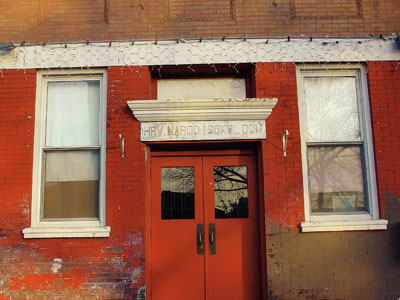
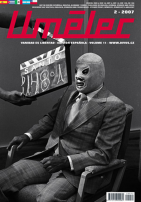















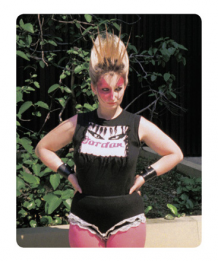





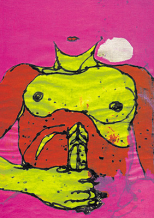

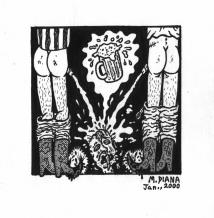


 New book by I.M.Jirous in English at our online bookshop.
New book by I.M.Jirous in English at our online bookshop.
Comments
There are currently no comments.Add new comment